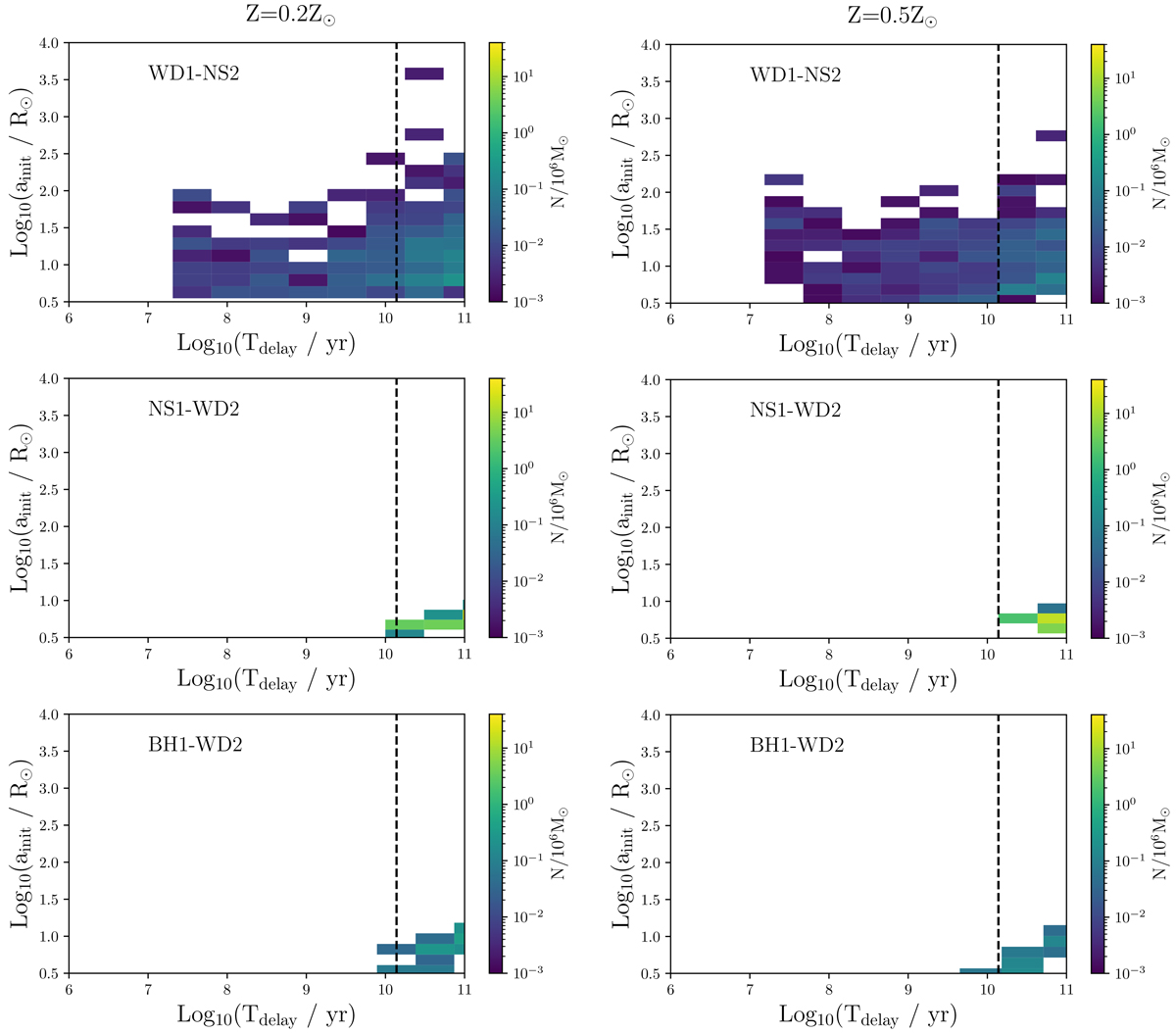Fig. 1.

Download original image
Number of compact binary models containing a white dwarf and a core-collapse remnant for each initial semi-major axis a0 (immediately post second remnant formation) and delay time Tdelay. The shading corresponds to the number of compact binaries produced in each 2D bin per 106 M⊙. The left column shows results at one-fifth solar metallicity, on the right at half-solar. Top row: WDNS binaries in which the WD forms first. The eccentricity is retained from the supernova, which occurs second, producing a greater range of semi-major axes with a tail extending to higher values at fixed delay time. Middle row: WDNS binaries in which the NS forms first. Bottom row: WDBH binaries in which the BH forms first. We find no WD1-BH2 models. In each case, the vertical dashed line indicates one Hubble time. The vast majority of such binaries merge on much longer timescales (see Table 1). Verbunt et al. (2017) natal kicks are adopted; equivalent plots with Hobbs et al. (2005) and Bray & Eldridge (2016) kicks are given in Appendix A.
Current usage metrics show cumulative count of Article Views (full-text article views including HTML views, PDF and ePub downloads, according to the available data) and Abstracts Views on Vision4Press platform.
Data correspond to usage on the plateform after 2015. The current usage metrics is available 48-96 hours after online publication and is updated daily on week days.
Initial download of the metrics may take a while.


